On October 6th I went to Trier for the day with a friend. I had never been there before, but she grew up near Trier and has been there very often, but never as a “tourist”.
We took the train from Koblenz, which goes along the Moselle most of the time. This makes for a picturesque journey, especially in the early morning when there’s some fog above the water.
We arrived in Trier, which was founded as Augusta Treverorum (“City of Augustus in the land of the Treveri”) in or before 16 BC, at 10 o’clock and started our sightseeing at the Porta Nigra, which is Latin for black gate. I think the gate originally had a different name, but has been renamed centuries ago because the stones have become black by pollution over time. (As usual, click on any photo for a bigger version.)
We then strolled through the city centre, much of which is a pedestrian area nowadays. Here’s the beautiful market place with the St. Gangolf church in the morning.
And the view to the right.
We went on to see the cathedral Dom St. Peter. Here’s the front side; note the different towers. Building of the cathedral beganin 326 AD, so it is considered the oldest church in Germany. Of course, it has been renovated, changed and in parts rebuilt since then. Note that at some point it was decided to add another floor to the right tower, but not the left. The Liebfrauenkirche is adjacent to the right of the cathedral.
Next, we spent a few hours visiting one of the exhibitions about Constantine the Great.
Afterwards we went to see the Konstantinbasilika (Constantine Basilica), a really beautiful building inside and out that was built in 310 AD. It is the largest surviving single-room structure from Roman times.
The inside used to be heavily decorated with marble plates, but is very plain now.
Nowadays the basilica sits right next to a rococo palace, the Kurfürstliches Palais. Incidentally, the palace now houses part of the Rhineland-Palatinate administration, namely the public authority that is responsible for schools (Aufsichts- und Dienstleistungsdirektion, ADD). Wouldn’t you like to have your office in this building?
There are some other Roman artifacts in Trier, namely the Roman Baths and the Amphitheatre, which we just saw from the outside. Here’s a photo of the latter.
By this time it was somewhat late in the afternoon, and we decided that we had done enough sightseeing for the day. We went back to the pedestrian area to go shopping and have dinner, then took the train back to Koblenz.

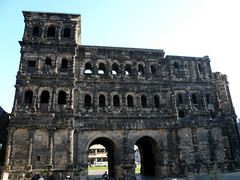
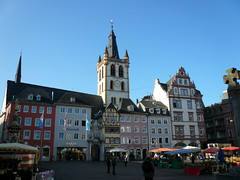

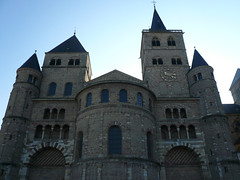
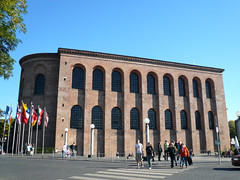

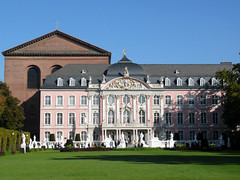
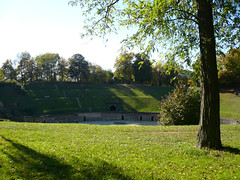
I read that Trier is considered the oldest city in Germany. Would be pretty cool to visit a place with such a long history. Anything over 50 years old here is considered ancient (and if its on the strip, demolished). My sister just got back from Berlin and said it was fabulous.